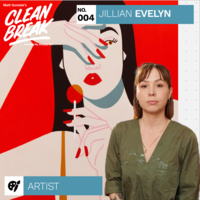How to get
into galleries
- by Always Art Staff


Getting gallery representation is the goal for many emerging artists, but often the ‘how’ is unclear. The key is not to rush the process; if you believe that if you do what it takes, you will eventually reach your goal. Having a quality gallery is better than rushing the process and winding up with one that is unsuitable. You ideally want to partner with people who believe in you, treat you with respect, and consider your needs.

When interacting with galleries, there are protocols you should follow.
What to avoid
- Do not walk into galleries unannounced and try to show them your portfolio. You do not want to come off as needy or desperate.
- Do not spam the same gallery with multiple submissions.
- Do not pitch to galleries who are not accepting new submissions.
- Do not allow vanity galleries to take advantage of you. They are the galleries that ask you for pay in return for exhibiting your work.
- Do not be too arrogant when interacting with galleries. Be confident about your work, but still be nice and easy to work with.
- Most importantly, you do not always need to pitch a gallery, the offer can come from them.
What to do
Looking for a gallery to partner with should not be your first goal when building your art career. Instead, your goal should be to try different things to establish your name as an artist and work on perfecting your art. By doing so, you will make galleries notice you and they will approach you first. Yes, the art market is competitive, but new unique talent is always welcome.
In reality, you are a personal brand. You should learn how to market and promote yourself as an artist. Work on your artist statement, your vision, and what makes your art unique. What new ideas are you adding to the art world? Galleries are interested in knowing more about you as an artist, your achievements, your mark in the art world, and what distinguishes you from others besides just your work.
Establish your name in the art world
You need to build your brand as an artist first and foremost. You should work on producing quality work, make sure that your art is sellable, and put it out there for the world to see. To do so, begin by building an online presence. Build your website and be active on social media; digital platforms have made it easier to show your work to potential audiences. The content you create on your digital platforms can be your medium to let others know how talented and unique you are as an artist, and how serious and committed you are to regularly producing quality work.
Even without a gallery, you can get your name out there using creative methods. Galleries receive hundreds of submissions every day from artists, so stand out from the crowd by trying different routes first. Do not just sit and wait for opportunities to come your way, create them.

- Set up your own shows with other emerging artists.
- Get press to talk about you and your work.
- Be involved in your community.
Network, meet new people, go to art events and show openings, and befriend other artists. Being referred to a gallery by an artist or an industry stakeholder is one of the best ways to have a gallery representation.
Furthermore, you should try different methods of selling your work.
- Building a history of sales will encourage galleries to represent you, because it proves that your work is sellable.
- Make sure to mention on your social channels that the work you posted is sold.
- You can also collaborate with other artists or look for commercial projects. Doing so will help you be seen as a successful artist in the eyes of the suitable galleries.
If you get approached by a gallery for a collaboration, research them, ask some of their member artists about their experience with them. If you find that it may be a good gallery for you, you can try to join them in a group show to see how it goes. If you are satisfied with how you were treated and think it will be a strong fit, then you can move forward with them.
How to approach a gallery
Galleries are businesses, so you should learn how to deal with them professionally. Before you look for any gallery, you first need to prepare your art portfolio and body of work so that it is ready to be handed to them to sell. Do not just pitch any random gallery you encounter. Create a short list of galleries with good reputations who would be interested in your art genre to avoid wasting time and energy on galleries whose art interest is clearly not aligned with yours.

When you want to submit your proposal to a gallery, make sure you follow its submission guideline that is on their website. Another option is to physically visit (not with the intention of submitting your portfolio or asking to join) and attend a show or an event they organize. Discover the art they have on show and be open to have conversations. If they ask about what you do, say that you are an artist and mention your achievements briefly. If you get their interest and find you as a match, they will ask to collaborate.






